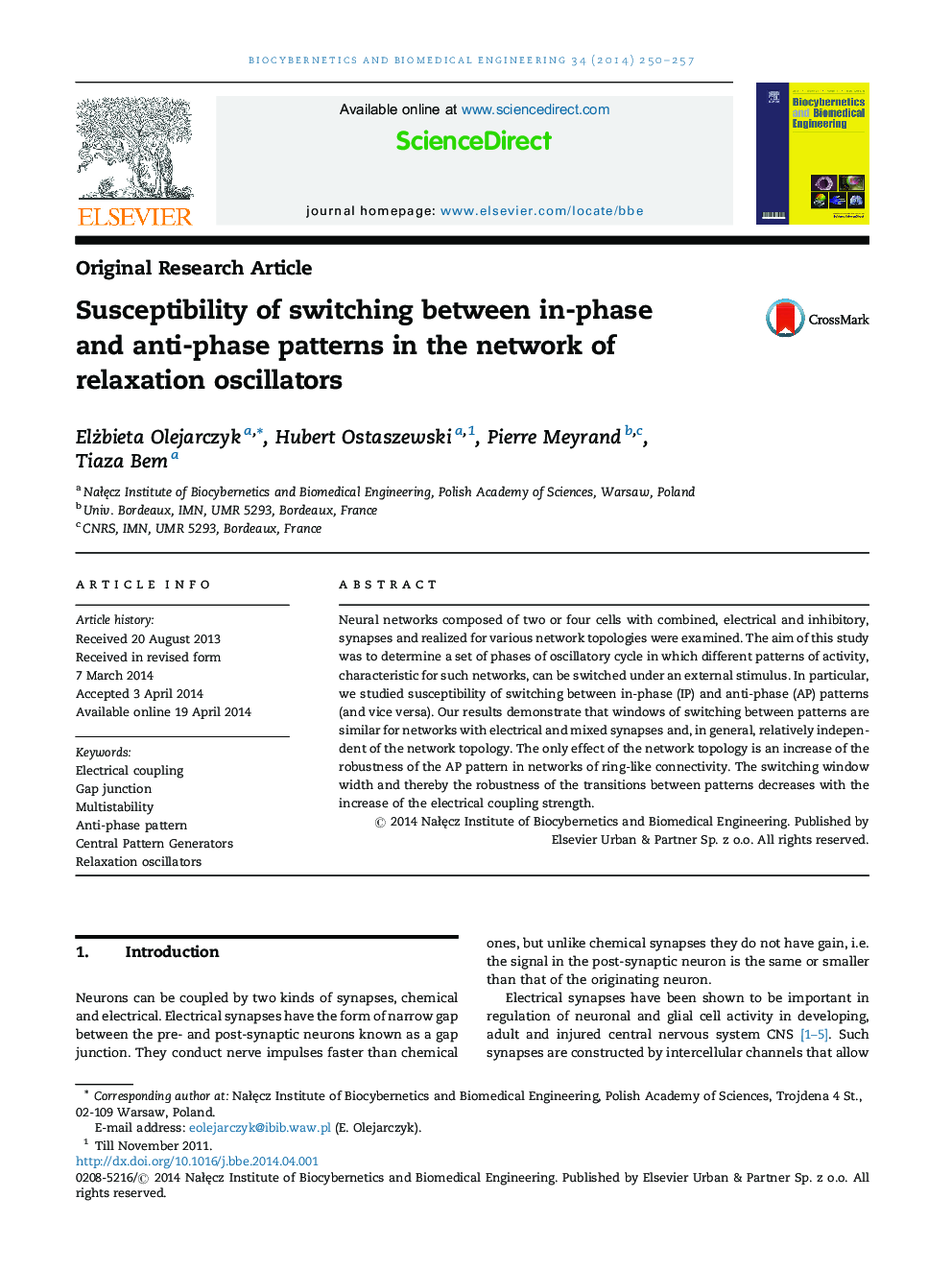| Article ID | Journal | Published Year | Pages | File Type |
|---|---|---|---|---|
| 5174 | Biocybernetics and Biomedical Engineering | 2014 | 8 Pages |
Neural networks composed of two or four cells with combined, electrical and inhibitory, synapses and realized for various network topologies were examined. The aim of this study was to determine a set of phases of oscillatory cycle in which different patterns of activity, characteristic for such networks, can be switched under an external stimulus. In particular, we studied susceptibility of switching between in-phase (IP) and anti-phase (AP) patterns (and vice versa). Our results demonstrate that windows of switching between patterns are similar for networks with electrical and mixed synapses and, in general, relatively independent of the network topology. The only effect of the network topology is an increase of the robustness of the AP pattern in networks of ring-like connectivity. The switching window width and thereby the robustness of the transitions between patterns decreases with the increase of the electrical coupling strength.
